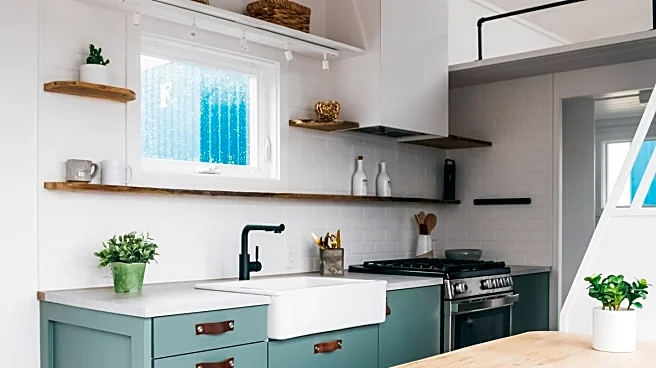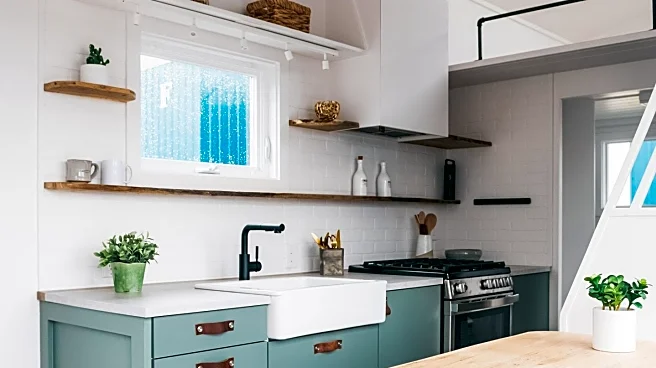What's Happening?
An Ohio resident has constructed a tiny house measuring just 19 square feet in his yard, spending approximately $5,000 on the project. The house, built on an old utility trailer, features essential amenities such as a compact AC and heating unit, a tilting bed, a storage bench, a portable toilet, and an outdoor shower system. The project highlights the potential for creative and efficient use of small spaces, offering a unique approach to minimalist living.
Why It's Important?
The tiny house movement reflects a growing interest in sustainable and minimalist living, emphasizing efficient use of space and resources. This project demonstrates how individuals can create functional living spaces with limited square footage, potentially reducing environmental impact and living costs. As housing prices continue to rise, tiny homes offer an affordable alternative, appealing to those seeking simplicity and sustainability. This trend could influence housing markets and urban planning, encouraging more innovative and eco-friendly designs.
Beyond the Headlines
The tiny house movement raises questions about zoning laws and building codes, which may need to adapt to accommodate these unconventional structures. Additionally, the cultural shift towards minimalist living challenges traditional notions of homeownership and consumerism, promoting a lifestyle focused on experiences rather than material possessions. As more people embrace tiny living, it could lead to broader societal changes in how we perceive and utilize space.












